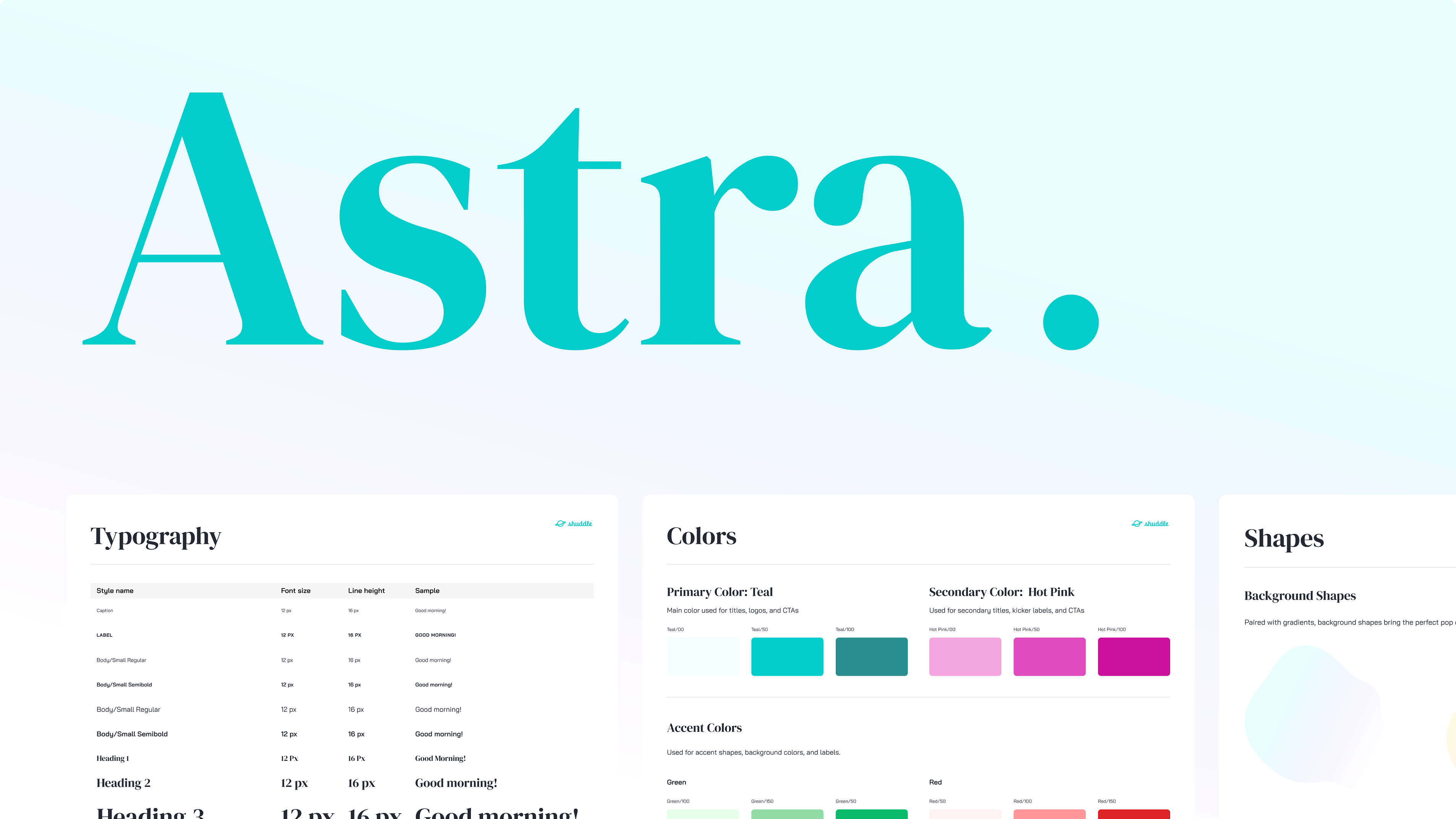I’ve been talking a lot lately about my new products where I teach design systems, so a lot of people have been asking to see design systems that I’ve made.
That’s a fair and reasonable request! After all, if you’re going to be taught by someone, you want proof that they know their stuff, right?
Designing with AI keeps you ahead of the curve. Get full access to video workshops, live learning labs, and exclusive talks with seasoned practitioners. Get 50% off your first month with code DANFRIENDS. Check out designingwith.ai.
The standard way that the tech industry typically evaluates whether someone knows their stuff is through the all-powerful Portfolio. There are many definitions of portfolio, but generally, it means “a collection of stuff.” For tech portfolios, that collection of stuff is often images of sites, apps, and other web thangs. Those images usually lack context, which is why we resort to interviews and can’t always hire only from viewing a portfolio. Each image represents a conglomerate of work; which part of that did you do? Did you art direct it? Write the front-end code? Did you design under a supervisor? Did you write the copy? The interview surfaces answers that a portfolio should have provided.
When people ask to see my design system work, I think they’re expecting to see a portfolio of some images of Figma UI kits or Storybook installs. That’s a reasonable expectation, but those aren’t the kinds of design systems I work on, even though they partially are. I work with teams of people who are already good at making Figma UI kits and Storybook installs. Their portfolios are full of great examples of UI kits and code libraries. If you’re reading this post for examples of those, here are some great case studies created by some of my students in my Dribbble design system course:
But that’s what the portfolios of my students and teams look like. For me to show images of those things are both a misrepresentation of my own work and a misappropriation from the people who directly did that work. I’d be largely showing their work, even though I played a part in it. Said differently, I am not a design system designer or a design system engineer, so my portfolio shouldn’t look like the portfolio of a design system designer or a design system engineer.
So what am I? (Cue existential dread.)
Never having been good at branding myself—who is?—I’ll instead turn to what other people have described about me after working with me. Two of my favorite encapsulations (partially because they stroke my ego):
Like Ted Lasso!
A way cooler Phil Jackson.
What do those say about me? I’m a coach!
But blech.
The denotation of that word is absolutely spot-on for the work I do with teams. But the connotation… ugh. It seems everyone is a coach nowadays, and all it takes is to have an opinion, like saying something smart to someone is coaching. That’s closer to mentorship, and there’s a difference. Per Sir John Whitmore’s book, Coaching for Performance:
Mentoring is very different to coaching, because coaching is not dependent on a more experienced person passing down their knowledge… Instead, coaching requires expertise in coaching, not in the subject at hand. That is one of its great strengths.
As bad as we are at evaluating portfolios in tech, we’re even worse and evaluating coaches. Fortunately, there are some useful models and methodologies we can look to. First up: sports!
In sports, the evaluation of coaches is clear: do they win? More specifically, do they capture the coveted trophy awarded to only one team per season? If not, they’re usually fired after a few years. The most memorable coaches are the winningest ones: Vince Lombardi, John Wooden, Pat Summitt, Bill Belichick, Mike Krzyzewski.
Where it gets tricky is that a coach’s success is inextricably tied to their team. A coach on their own cannot win, because they’re not playing. So coaching always begs the question: did they win because of the players or because of the coach? Did the Chicago Bulls win so much because of Michael Jordan or because of Phil Jackson? Related, did Michael Jordan win because he had Phil Jackson as a coach, or did Phil Jackson win because he had Michael Jordan as a player?
The Kirkpatrick Model provides more detail in how to evaluate coaches. It outlines 4 levels to measure:
- Reaction. The degree to which participants find the training favorable, engaging, and relevant to their jobs
- Learning. The degree to which participants acquire the intended knowledge, skills, attitude, confidence, and commitment based on their participation in the training.
- Behavior. The degree to which participants apply what they learned during training when they are back on the job.
- Results. The degree to which targeted outcomes occur as a result of the training and the support and accountability package.
Reaction (#1) and Results (#4) are the easiest to observe and articulate, even if they’re difficult to achieve. The results I’ve seen from working with design system teams often look like this:
- After moving products onto a design system, The Cosmopolitan of Las Vegas experienced a 27% increase in e-commerce conversion.
- The Seventh-day Adventist Church created a design system to let them go from building 120 chapter sites per year to 2400, a 20x increase.
- ExxonMobil used their new design system Unity to immediately build 50+ web apps in 10 months.
But again, those are their results, not mine, even though I was involved.
The real coaching work is in learning (#2) and behavior change (#3). That’s hard to observe. Also, I can’t say it; the team has to be the ones to say it. I can say I taught, but only they can say whether they learned. I can say I helped create the environment, conditions, and culture for change, but only they can say whether or not change happened.
Was Phil Jackson a good coach for Michael Jordan? We can’t tell as outsiders. We can’t even trust Phil Jackson’s words on it, because of all the implicit bias that might exist there.
The most reliable source on whether Phil Jackson was a good coach for Michael Jordan is Michael Jordan. So, does he believe Phil Jackson was a good coach for him? Yes.
What I do is I challenge myself in big games. I try to find a quiet center within me because there’s so much hype out there, and I don’t want to fall into it. I don’t want to rush. I’ll start off rebounding or getting everybody else involved until I get an easy shot, a layup, or a free throw or something, then boom, I’m off and running. I will have controlled my emotions and not gotten over-hyped or lost my focus. These are things Phil has taught me.
The results of 6 Chicago Bulls’ championships are Michael Jordan’s results, and the results of the other players on that team. And yes, it’s a feather in Phil Jackson’s cap as well, but his real results are the learning and behavior change that Michael Jordan credits.
Back to my portfolio, as a design systems coach, what have people credited to me as it relates to learning and behavior change?
- After I helped a data analytics startup ship multiple products in record time, the head of design said, “Your design system approach fundamentally changed how we build product here.”
- After I helped a Fortune 10 corporation create their first enterprise-wide design system, the design strategy manager said, “What can we learn and help teach others about? That mindset is what you brought to our company.”
- After I helped a non-profit create a design system base to build on, the communications director said, “You provided a great foundation where we were able to take the pieces and easily add new ones.”
- After I worked with a digital publisher to help turn around their declining business through workflow improvements, the director of Agile program management said, “That was simultaneously the most and least Agile thing we’ve ever done here.” The CEO said my involvement was “crucial” to their success.
Feedback from students across my courses:
I find it fascinating how you are able to take seemingly complex concepts and give them over in such a clear and simplistic way. I was completely overwhelmed with the thought of building an official single design system in my company and I already feel like it is absolutely doable and even possible to work on together with delivering the regular day to day work. Thank you for the most pleasant and enjoyable design systems course!!
You ask arresting questions and making unsettling arguments. You have caught me off guard with hard questions I could not answer in the moment because they were getting at my values and boundaries.
You’ve put Design Systems on the map in a way that anyone could understand.
As a new leader, you helped me find and create clarity for our team—not by giving me all the answers, but by helping me grow and find the confidence to chart our path forward together. These lessons will stay with me for the rest of my career.
That’s my design system coaching portfolio.
Am I good at it? You can be the judge of that.
Join 63,400+ subscribers to the weekly Dan Mall Teaches newsletter. I promise to keep my communication light and valuable!


